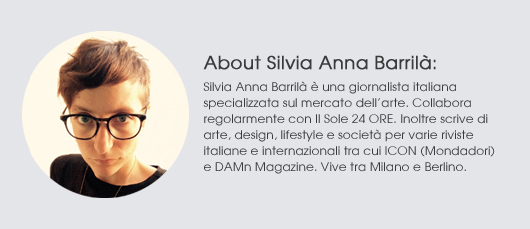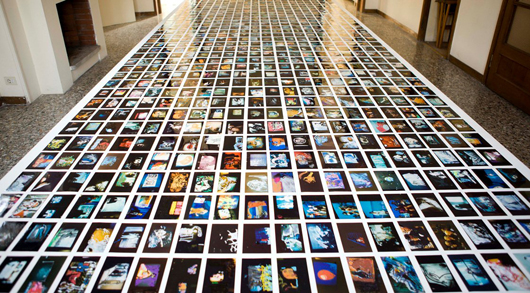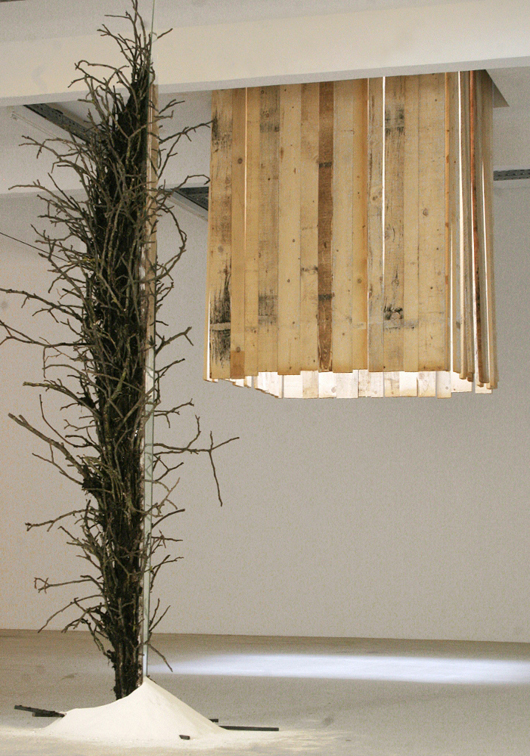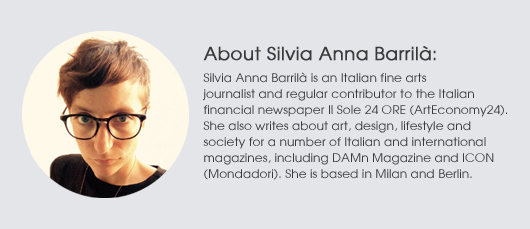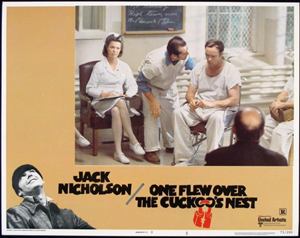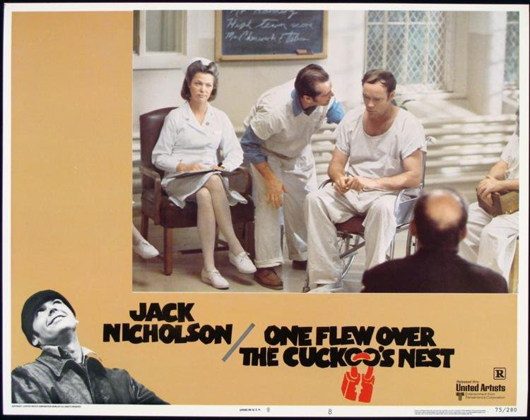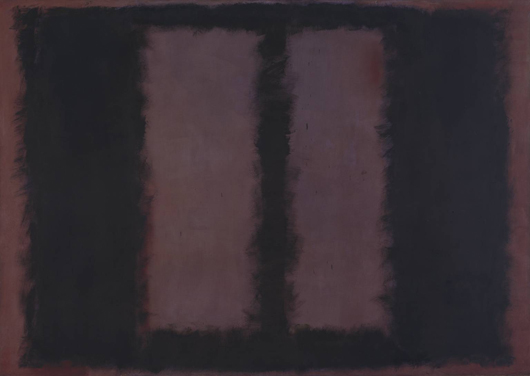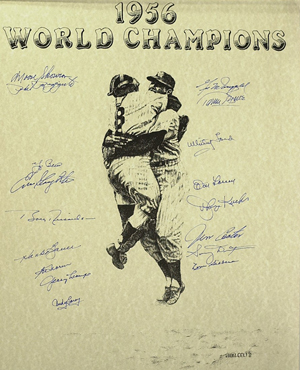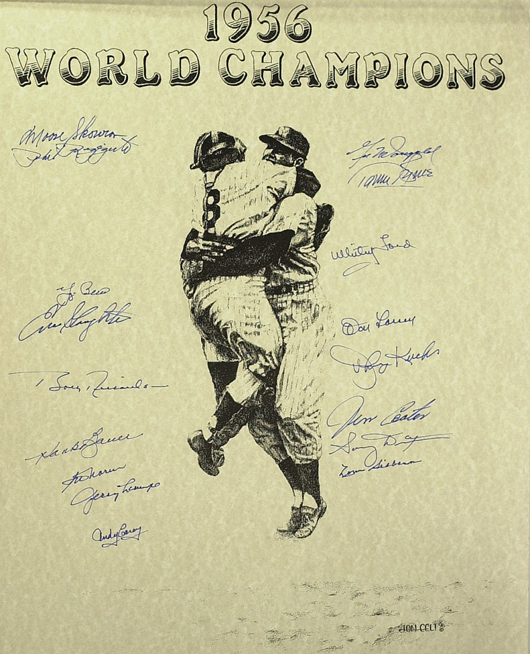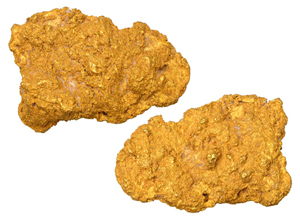
Large gold nugget, origin: Peru. Weight: 49.8 troy ounces; 994.9 dwt. Assay test: 98.4% gold. Provenance: In the ownership of a Houston numismatic company for 35 years; used as their mascot on catalog covers. Est. $80,000-$120,000. Legend-Morphy Auctions image. DENVER, Pa. – Legend-Morphy Rare Coin Auctions, a company formed in June by auction house owner Dan Morphy and coin dealer Laura Sperber, will launch its operation on Oct. 10 with a 225-lot sale of rare coins and gold nuggets. The auction will commence at 6 p.m. Eastern Time, with Internet live bidding through LiveAuctioneers.com.
The auction premiere will open with an exceedingly rare 1783 Chalmers threepence. Made from Spanish silver coins, the threepence was privately minted in Annapolis, Md., by gold and silversmith John Chalmers. An influential member of his community, Chalmers served as a captain in the Continental Army and was later sheriff of Baltimore. It is believed that Chalmers produced his silver coins during the time that the Continental Congress was temporarily headquartered in Annapolis. A new discovery, the coin has been given an auction estimate of $32,500-$37,500.
A 1916/16 overdate nickel NGC MS64, which reflects a striking error at the mint, is one of the top lots of the sale. “This coin is especially rare in this high grade,” said Julie Abrams, president of Legend-Morphy. “It is estimated at $135,000-$150,000 but might even exceed that amount.”
Another lot with a six-figure estimate is the 1911 $20 PCGS proof 66+ CAC. One of only 100 pieces ever minted, it could realize $100,000-$110,000. “It is the only coin of its type graded proof 66+ by either PCGS or NGC,” Abrams noted.
An especially appealing coin to collectors is the 1915 $10 NGC PR66 Indian-head gold piece with matte proof finish. It is estimated at $65,000-$75,000.
An 1863 proof set PCGS PR64-PR66 is a totally original matched set that carries a presale estimate of $20,000-$25,000. From the same era, an 1862 $3 PCGS proof 63 CAC comes with provenance from the Byron Reed collection. It could fetch $22,500-$25,000 on auction day.
Other highlights include a 1939-D dime PCGS MS69FB whose condition is described by Abrams as “sheer perfection,” est. $6,000-$6,500; a 1795 flowing-hair dollar, 3-leaves, grade PCGS XF40 (CAC), est. $10,500-$11,500; and a 1912 $5 PCGS MS65 $10,000-$11,000.
An 1883 Hawaiian dollar PCGS MS65 CAC, with a finely detailed relief image of King Kalakaua I (the last reigning king of the Kingdom of Hawaii), was formerly in the Gerald Forsythe collection, the finest collection of Hawaiian coins ever assembled outside of the Aloha State. “Such dollars are extremely rare in great condition,” Abrams said. It is estimated at $25,000-$27,500.
Seven gold nuggets have been included in the sale. A large and impressive Peruvian nugget weighing a hefty 49.8 ozt, 994.9 dwt was the property of a Houston numismatic company for 35 years and served as the firm’s corporate mascot on catalog covers. It comes to auction at Legend-Morphy with an estimate of $80,000-$120,000.
Legend-Morphy co-owner Laura Sperber commented that the premiere auction contains “many awesome pieces, such as the stunning $20 1911 PCGS PR66+ CAC, which is being offered with no reserve.” Sperber continued: “I anticipate strong bidding on that coin and every other coin in the auction. To identify each coin in the sale that is actually owned by Legend, we’ve put small ‘L’s at the end of the appropriate catalog descriptions. That should give buyers additional confidence concerning the coins’ quality.”
Sperber’s business partner, Dan Morphy, said he expects the Oct. 10 auction to attract new collectors who have been regular buyers in Morphy Auctions’ past sales.
“I believe that collectors of the types of antiques auctioned at Morphy’s are open to new fields of collecting. They’re aware of how solid the coin-collecting hobby has been over many decades, and they’re interested in learning how to get into it through an auction house they already know they can trust,” said Morphy. “Bidders in Morphy’s sales have become accustomed to a certain level of quality in terms of what is offered at our sales and in the customer service we provide, and that they’re going to find that it’s more of the same with Legend-Morphy.”
For additional information on any coin or gold nugget entered in Legend-Morphy’s Oct. 10 auction debut, call 717-335-3435 or e-mail info@legendmorphy.com.
View the fully illustrated catalog and sign up to bid absentee or live via the Internet at www.LiveAuctioneers.com.
# # #
ADDITIONAL LOTS OF NOTE
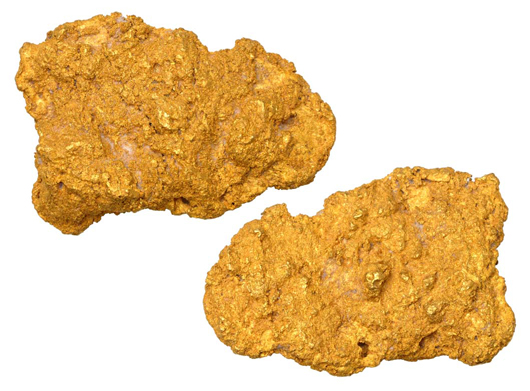
Large gold nugget, origin: Peru. Weight: 49.8 troy ounces; 994.9 dwt. Assay test: 98.4% gold. Provenance: In the ownership of a Houston numismatic company for 35 years; used as their mascot on catalog covers. Est. $80,000-$120,000. Legend-Morphy Auctions image.



